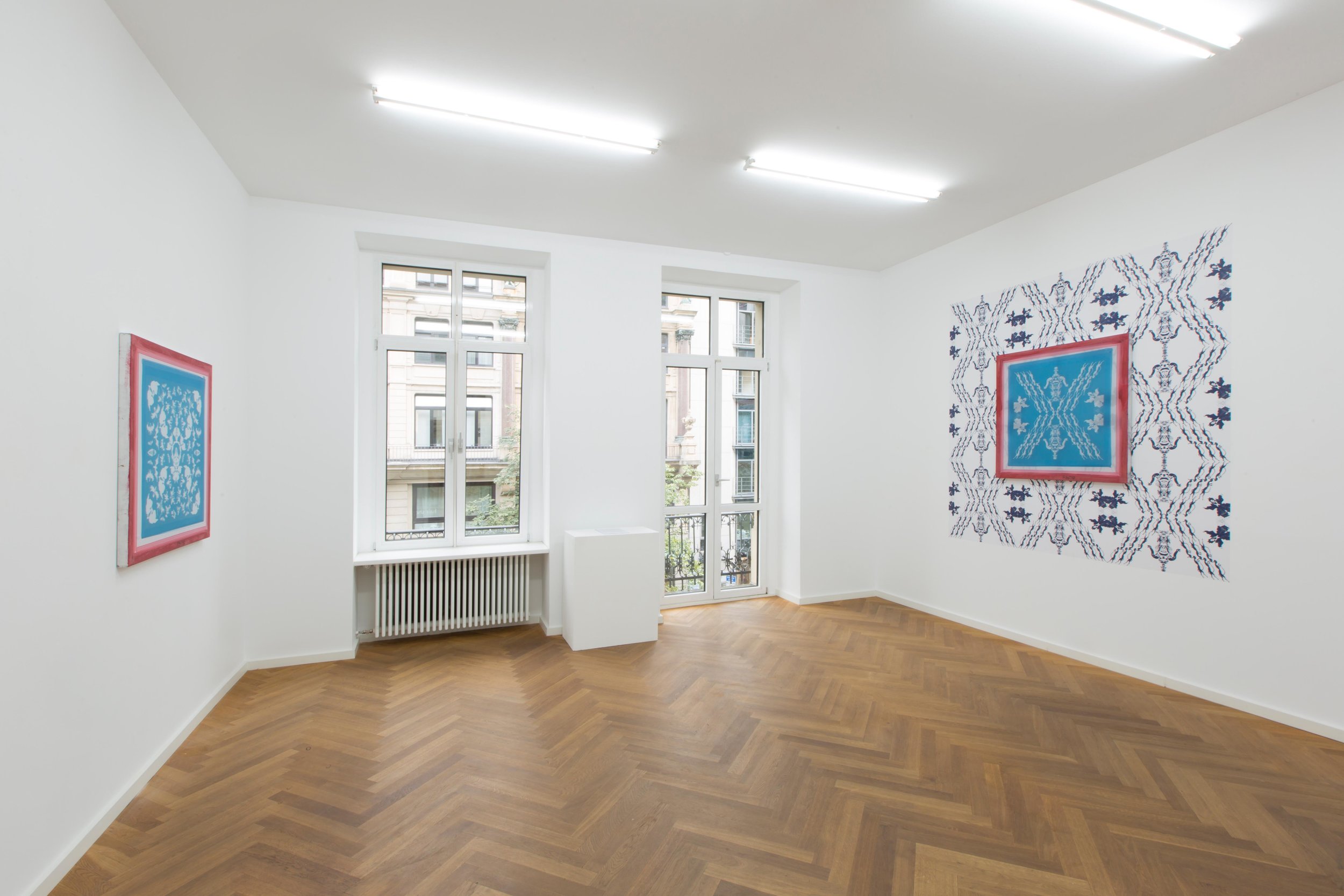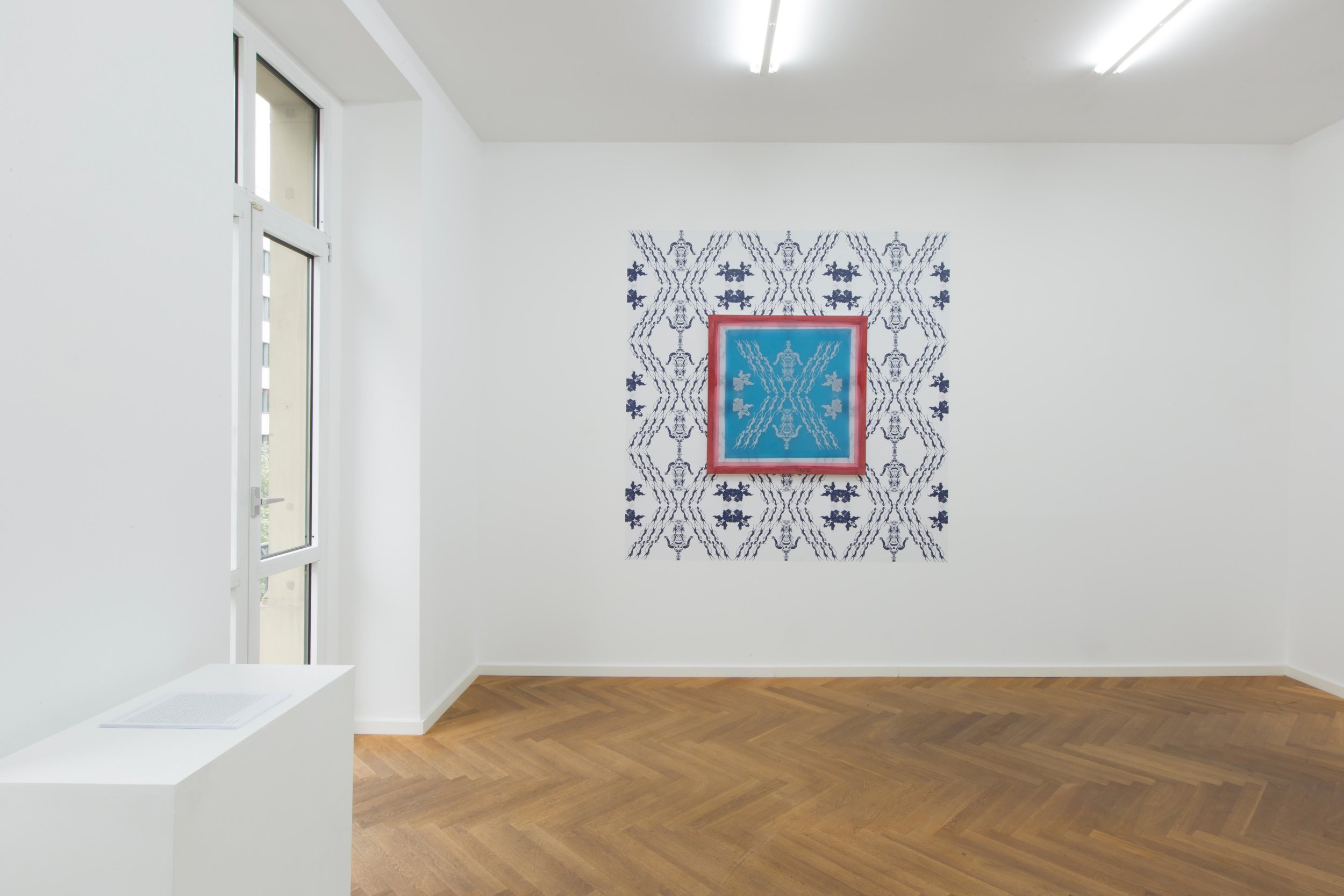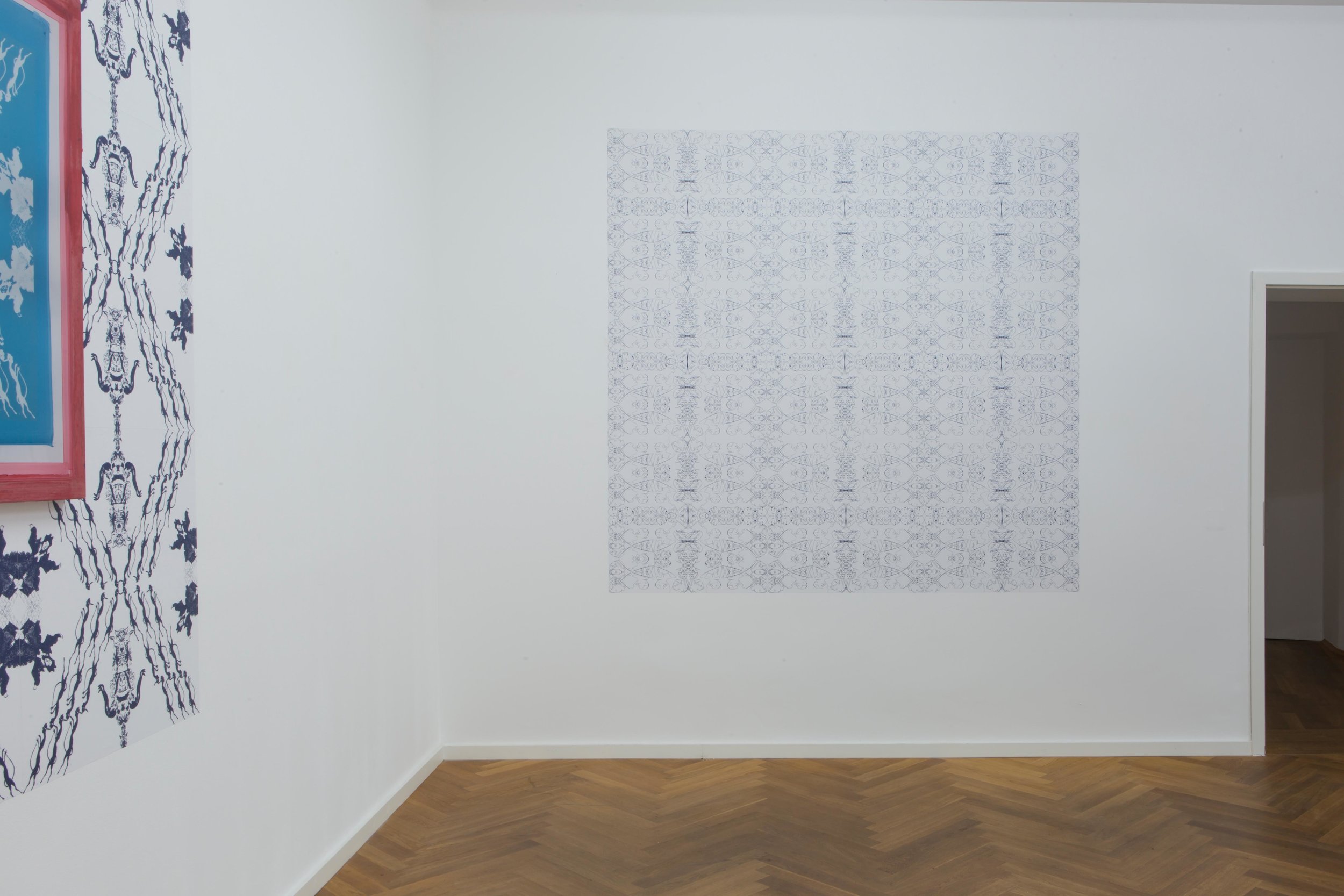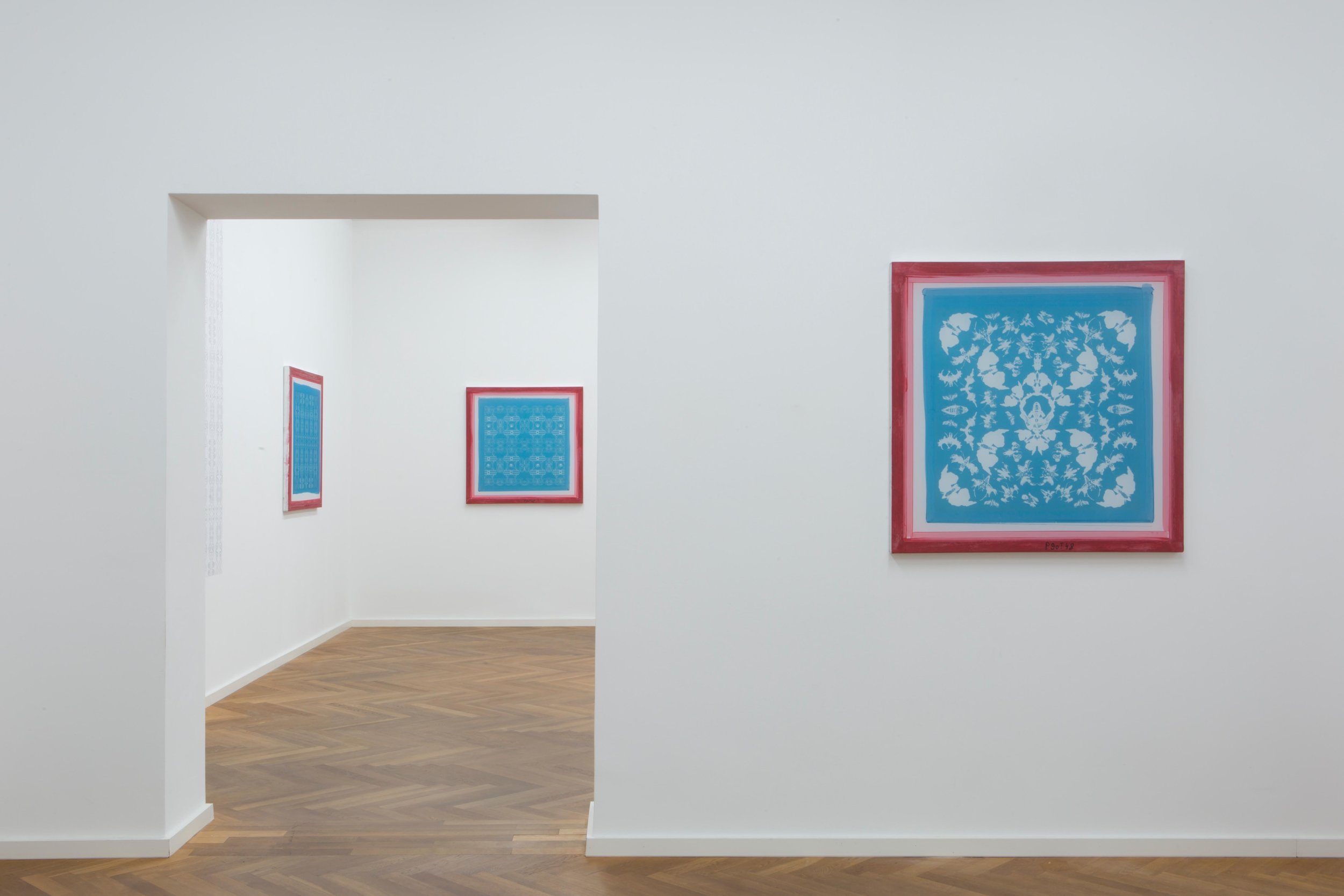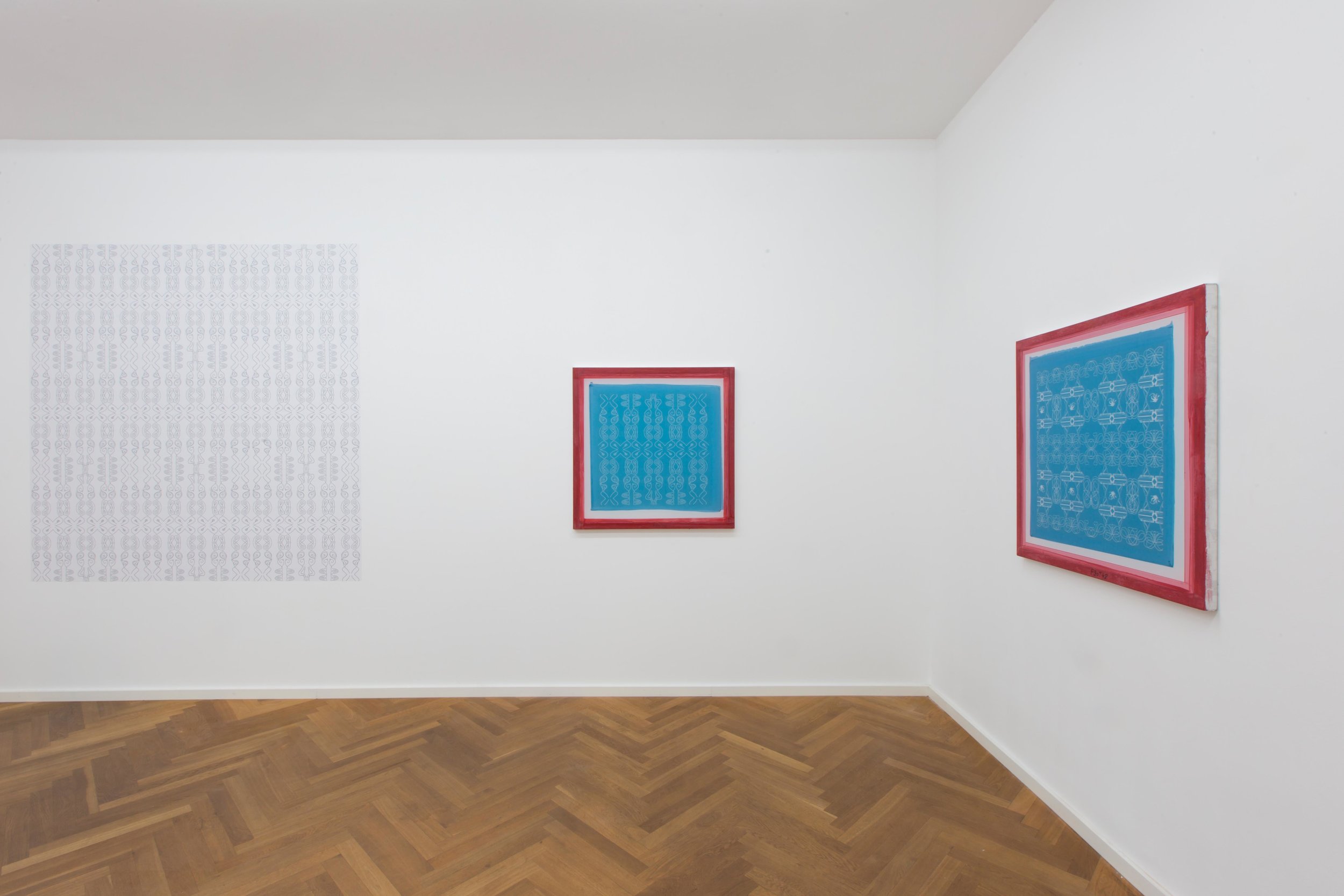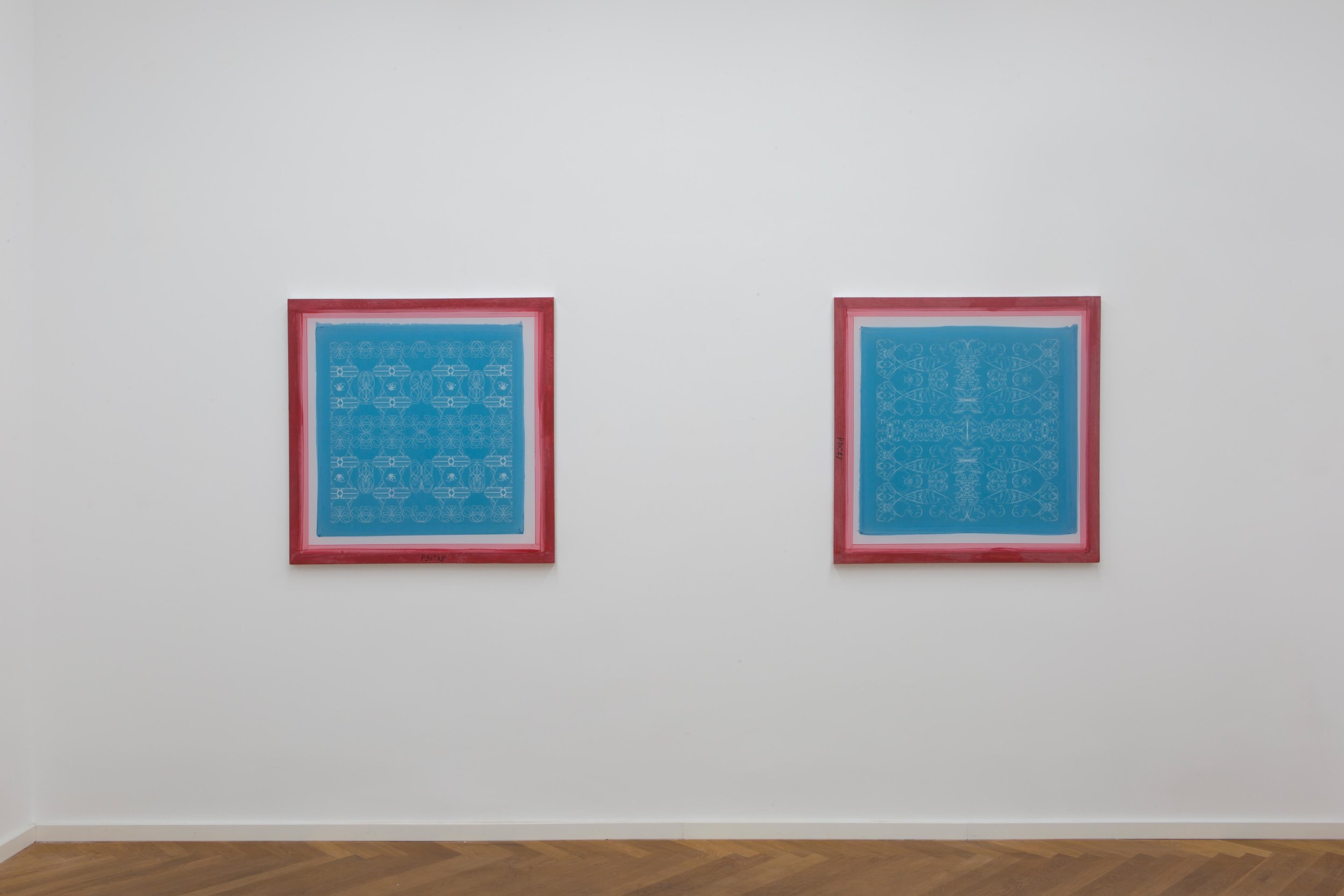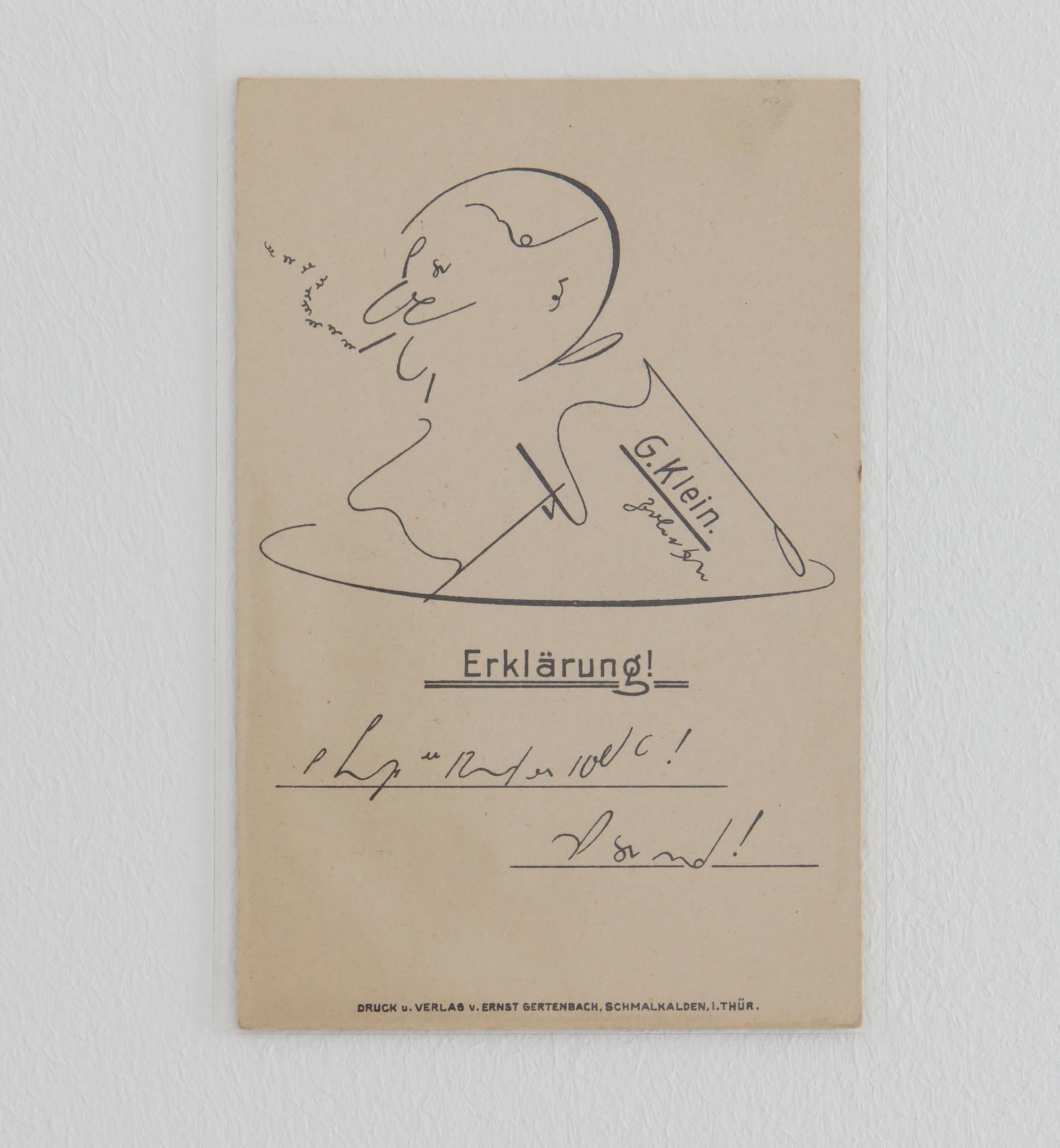Julien Bismuth
Ideograph
Sep 8 – Oct 28, 2018
For his exhibition at Galerie Parisa Kind, Julien Bismuth is presenting a new series of silkscreen works. The title of the exhibition, Ideograph, is a word that means a sign that represents a concept by visual means, as in hieroglyphs or pictograms. The center-piece of the exhibition is a series of 6 silkscreens. These objects have a dual status, in that they are designed to be appreciated as paintings, as well as to be able to produce an indefinite number of prints. Each silkscreen is thus a painting of an image, but also a tool for the production of prints of each image. Each silkscreen is adorned with a pattern that references a specific historical document, with each bearing a singular and eloquent relationship to graphic mark-making. These works are a continuation of the series of serigraphy which Bismuth exhibited at the Guggenheim Museum New York in 2016.
The exhibition will also include a text, to be produced during a performance at the gallery. Two of the patterns were produced using elements of the German poet Justinus Kerner's (1786-1862) Klecksographien series. Kerner's drawings were produced using the same ink-blot method as the Rorschach stain. Kerner, however, would augment each stain so as to transform it into an imaginary creature or being, from which he then wrote poems. A third pattern was produced using Francis Galton’s (1822-1911) illustrations to his treatise on fingerprint identification, essentially the first scientific work on biometric identification. A fourth pattern was produced using illustrations from the English caricaturist William Hogarth's (1697-1764) Analysis of Beauty, in which he defends a conception of beauty based on the "serpentine line," i.e. a line which seeks to translate the movements and singular forms of the living world rather than circumscribe or schematize them. A fifth pattern references a series of sketches made using stenographic symbols, produced as advertisements for the Gäbelsberger shorthand method in the early 20th century. The last pattern uses the signature of the artist’s paternal grandfather, Jonas Bismuth, whose initials he shares.
Bismuths’s work often functions by means of the logic of citation, re-iteration and digression. The titles of each of the serigraphy works points to a historical reference, yet nothing in the exhibition, including this press release, works to frame these references within a unified narrative or argument. Like a constellation of scattered elements, one can navigate along different paths between these materials, with each providing a different perspective onto the same questions. To what extent can one read or read into the marks made by an individual’s hand? How does one read identity into a fingerprint or a signature? How does one read into an inkblot, a doodle, or an arabesque? The title of each work indicates a point along a train of thought, its turning points, and its potential extensions. Francis Galton was also the inventor of composite photographic portraits, and the writer of a treatise titled Arithmetic by Smell. If you look up the phrase "composite portrait” on the web, you’ll be led to studies on "the averageness hypothesis" according to which "composites of faces tend to be more attractive than individual ones.”
All of these points are questions leading elsewhere.
Julien Bismuth (born 1973 in Paris) works and lives in New York. Solo exhibitions include shows at the Solomon R. Guggenheim Museum, New York, NY; Sibyl Sybil, La Criée. Centre d'Art Contemporain, Rennes (FR), La Ferme Du Buisson, Marne-la-Vallée, France; Gesellschaft für aktuelle Kunst (GAK) Bremen, Germany; Emanuel Layr Galerie, Vienna, Austria; The Box, Los Angeles, CA; Crac Alsace, Altkirch, France; Bloomberg Space, London, England and Galerie Georges-Philippe & Nathalie Vallois, Paris, France.
Bismuth took part in numerous group shows, for example at the Palais de Tokyo, Paris, France; La Nuit Blanche, Paris, France; Musée du Jeu de Paume, Paris, France; Kunsthalle Wien, Vienna, Austria; ICA Philadelphia; 12e Prix Fondation d’entreprise Ricard, Paris, France; Schirn Kunsthalle, Frankfurt, Germany; Villa Arson, Nice, France; Musée du Jeu de Paume, Paris, France; Orange County Museum, Newport Beach, CA. His performances (often in collaboration) could be seen at such places as MUSAC, Leon, Spain; Tate Modern London, England; and Parasol Unit, London, England. In addition, Bismuth founded the publishing house Devonian Press with Jean-Pascal Flavien in 2005.
This is his forth solo exhibition with Galerie Parisa Kind.

